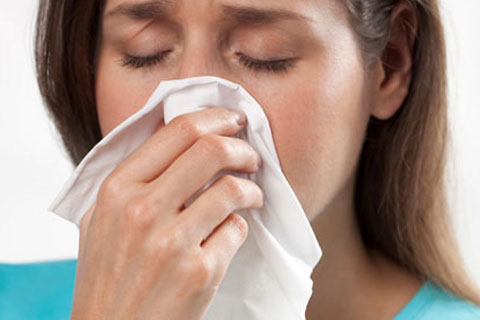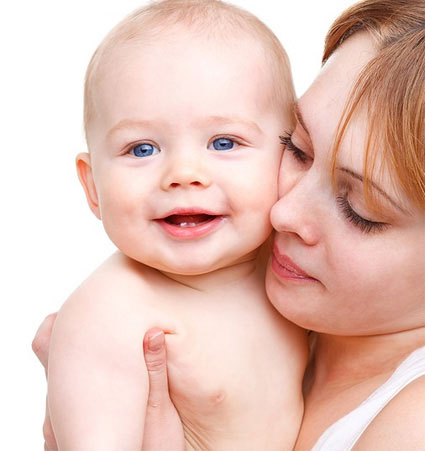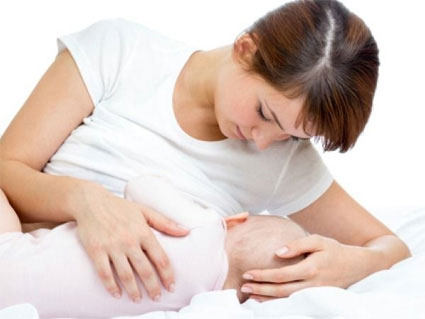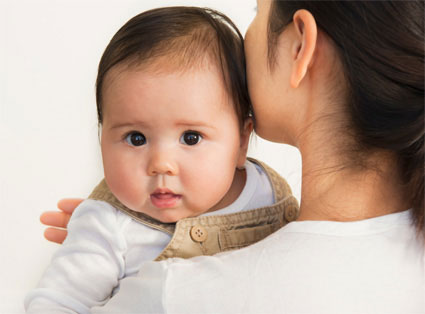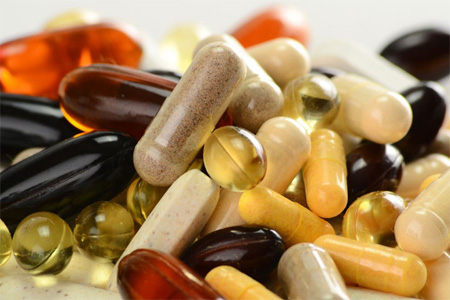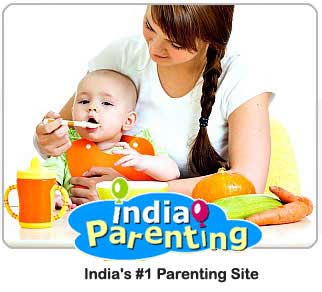Thrush or yeast infection is very common in babies. Diagnosing the infection helps in early treatment. Treatment of yeast infection is important for preventing its spread. Knowing about the signs and symptoms of yeast infection in nursing mothers and young babies help in diagnosing the condition. Read on to know more about thrush. Thrush or yeast infection is a very common and harmless in a baby’s mouth. It can affect the nipples of the breastfeeding mother. Yeast is normally found in all our digestive system. However, when it starts multiplying and growing in large numbers the infection sets in. In this articleWhat is the Cause of Thrush in Babies?Is Thrush ContagiousWhat Are Symptoms of a Yeast Infection in Nursing Mothers?Common Signs of Yeast Infection in Young BabiesWhat Should You Do If You Suspect Thrush in Your Baby or You?What is the Cause of Thrush in Babies? Many women suffer from vaginal yeast infection during pregnancy without being aware of it. In such cases the infants comes in contact with yeast as they travel down the birth canal. Another cause of thrush in babies is intake of antibiotics which the mother is given during labour or delivery. A baby delivered by C-section may contract yeast infection if his mother is given antibiotics immediately after surgery. In some babies it is difficult to pinpoint the exact cause of thrush. Some babies and women are just more susceptible than others to yeast infection. Yeast thrives in warm, moist, sugary environment. Is Thrush Contagious?Thrush is something that can be passed on from your baby to you. Hence it is important that both you and your baby seek treatment to get rid of thrush at the same time. What Are Symptoms of a Yeast Infection in Nursing Mothers? Itchy, red, pink, shiny, or burning nipples. Pink nipples can also be a symptom of ailments like dermatitis or bacterial infection.Acute, shooting breast pain during or after feedings.Yeast infection of the vagina.The first thing you must do on noticing these symptoms is to get your condition diagnosed properly. Start taking appropriate treatment only after diagnosis. Common Signs of Yeast Infection in Young BabiesWhite patches on the inside of the lips and cheeks which resembles cottage cheese and is not easy to wash off.White coating which appears only on a baby’s tongue is not a sign of yeast infection. It may be just the milk residue left over in the tongue.Shrieking and crying when nursing or sucking on a pacifier or bottle.Patchy bright or dark red diaper rash with small, red spots around the edges of the main rash. The rash often creeps into the folds of skin around the child’s genitals and legs. What Should You Do If You Suspect Thrush in Your Baby or You? The first thing you must do is to contact your health care provider for correct diagnosis and treatment. If you seek proper and timely treatment you can get rid of thrush within a few days. In most cases thrush normally clears up within a week. However it is very important for both you and your baby to get treated at the same time. Wash all your baby’s toys, pacifiers, and breast pump parts. Sterilize them in an electric steam sterilizer or in boiling water for around 20 minutes after each use. This will ensure that your baby is not re-infected. Make sure to wash your hands after feedings. Including lactobacillus acidophilus in your diet is very useful while undergoing yeast infection treatment. This will help to re-introduce friendly bacteria to the digestive tract which keeps yeast in check. Yogurt is rich in lactobacillus acidophilis. Include 2-3 servings of unflavored, plain yogurt in your daily intake to stay away from bacterial and yeast infection. Another thing which you can do is to expose your breasts to sunshine and letting your nipples dry in between feedings. This will keep moisture away from your breasts and help to recover fast. In case the pain caused due to yeast infection is severe and you find it difficult to nurse your baby you can make use of a breast pump. Pumping will be useful to extract milk and feed your baby till such time that your nipples heal completely.
Thrush or yeast infection is very common in babies. Diagnosing the infection helps in early treatment. Treatment of yeast infection is important for preventing its spread. Knowing about the signs and symptoms of yeast infection in nursing mothers and young babies help in diagnosing the condition. Read on to know more about thrush. Thrush or yeast infection is a very common and harmless in a baby’s mouth. It can affect the nipples of the
breastfeeding mother. Yeast is normally found in all our digestive system. However, when it starts multiplying and growing in large numbers the infection sets in.
What is the Cause of Thrush in Babies?
Many women suffer from vaginal yeast infection during pregnancy without being aware of it. In such cases the infants comes in contact with yeast as they travel down the birth canal. Another cause of thrush in babies is intake of antibiotics which the mother is given during labour or delivery. A baby delivered by C-section may contract yeast infection if his mother is given antibiotics immediately after surgery.
In some babies it is difficult to pinpoint the exact cause of thrush. Some babies and women are just more susceptible than others to yeast infection. Yeast thrives in warm, moist, sugary environment.
Is Thrush Contagious?
Thrush is something that can be passed on from your baby to you. Hence it is important that both you and your baby seek treatment to get rid of thrush at the same time.
What Are Symptoms of a Yeast Infection in Nursing Mothers?
- Itchy, red, pink, shiny, or burning nipples.
- Pink nipples can also be a symptom of ailments like dermatitis or bacterial infection.
- Acute, shooting breast pain during or after feedings.
- Yeast infection of the vagina.
The first thing you must do on noticing these symptoms is to get your condition diagnosed properly. Start taking appropriate treatment only after diagnosis.
Common Signs of Yeast Infection in Young Babies
- White patches on the inside of the lips and cheeks which resembles cottage cheese and is not easy to wash off.
- White coating which appears only on a baby’s tongue is not a sign of yeast infection. It may be just the milk residue left over in the tongue.
- Shrieking and crying when nursing or sucking on a pacifier or bottle.
- Patchy bright or dark red diaper rash with small, red spots around the edges of the main rash. The rash often creeps into the folds of skin around the child’s genitals and legs.
What Should You Do If You Suspect Thrush in Your Baby or You?
The first thing you must do is to contact your health care provider for correct diagnosis and treatment. If you seek proper and timely treatment you can get rid of thrush within a few days. In most cases thrush normally clears up within a week. However it is very important for both you and your baby to get treated at the same time.
Wash all your baby’s toys, pacifiers, and breast pump parts. Sterilize them in an electric steam sterilizer or in boiling water for around 20 minutes after each use. This will ensure that your baby is not re-infected. Make sure to wash your hands after feedings.
Including
lactobacillus acidophilus in your diet is very useful while undergoing yeast infection treatment. This will help to re-introduce friendly bacteria to the digestive tract which keeps yeast in check. Yogurt is rich in
lactobacillus acidophilis. Include 2-3 servings of unflavored, plain yogurt in your daily intake to stay away from bacterial and yeast infection. Another thing which you can do is to expose your breasts to sunshine and letting your nipples dry in between feedings. This will keep moisture away from your breasts and help to recover fast.
In case the pain caused due to yeast infection is severe and you find it difficult to nurse your baby you can make use of a breast pump. Pumping will be useful to extract milk and feed your baby till such time that your nipples heal completely.

















